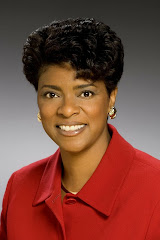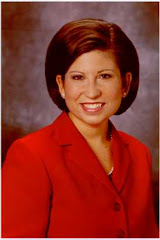There is a reason for the close connection between the words "government" and "governor:" governorships are, in fact, where the power is. Except for the U.S. President, the governors of the 50 states wield more individual influence than any other official.
This correlates with the history of women as elected officials. Tens of thousands have won elections to office from school board to Congress, and many hundreds have won other statewide offices, but only 25-women have been elected as governors.
The first woman to hold statewide office was Laura Eisenhuth, who won her race for North Dakota's state superintendent of schools in 1892 -- before women there had full voting rights. Several western states emulated that, and all except New Mexico granted full voting rights prior to 1920, when the 19th Amendment enfranchised all women. Nowhere, however, did any woman seriously campaign for governor until 1924, when Texas elected Miriam A. "Ma" Ferguson and Wyoming elected Nellie Taloe Ross.
Governor Ferguson remains the nation's only female governor elected to non-consecutive terms, as Texans chose her again in 1932. Then there was a long dry spell before Alabama elected Lurleen Wallace in 1966, a surrogate for her husband, segregationist George Wallace. She died in office from cancer in 1968.
Because all three of these women had husbands who preceded them in politics and could build on their husband's who preceded them in politics and could build on their husbands' networks, Connecticut's Ella Grasso sometimes is considered the first "real" female governor. Elected in 1974, she never lost a race in a long political career and moved from Congress to the governorship. Unfortunately, Governor Grasso also succumbed to cancer and died just five weeks after resigning. Her husband, an educator, had stayed so far in the background that when she died, many were surprised that she was married.
The 1976 election brought the nation's only female governor who never married -- Washington scientist Dixy Ray Lee. Washington has gone to elect a second female governor, Christine Gregorie, who currently holds office. It also has women -- Patty Murray and Maria Cantwell -- in both of its U.S. Senate seats, making it the only state thus far to have women in three top jobs.
Arizona set another kind of record in 1998, when women won all of its five statewide offices. Jane Dee Hull was elected governor in her own right in 1998; she previously served as Secretary of State and when the scandal-plagued incumbent resigned in 1997, she became governor. Arizona's attorney general at the time was Janet Napolitano, who went on the governship in 2002 and now heads the Department of Homeland Security. When she left for Washington n 2009, Jan Brewer replaced Governor Napolitano -- giving Arizona three consecutive female governors. It had a fourth in Rose Mofford, who replaced another man forced to resign in 1988, but didn’t to seek election in her own right.
Five other women have served as governors without ever being elected to the position, but the elected women, in chronological order, are: 1924, Nellie Taloe Ross, Wyoming; 1924, Miriam "Ma" Ferguson", Texas; 1966, Lurleen Wallace, Alabama; 1974, Ella Tambussi Grasso, Connecticut; 1976, Dixy Lee Ray, Washington; 1983, Martha Layne Collins, Kentucky; 1984Madeline M. Kunin, Vermont; 1986, Kay A. Orr, Nebraska; 1920, Joan Finney, Kansas; 1990, Barbara Roberts, Oregon; 1990, Ann Richards, Texas; 1994, Christine Todd Whitman, New Jersey; 1996, Jeanne Shaheen, New Hampshire; 1998, Jane Dee Hull, Arizona; 2000, Ruth Ann Minner, Delaware; 2000, Judy Martz, Montana; 2002, Linda Lingle, Hawaii; 2002, Jenifer Granholm, Michigan; 2002, Janet Napolitano, Arizona; 2002, Kathleen Sibelius, Kansas; 2003, Kathleen Blanco, Louisiana; 2004, Christine Gregoire, Washington[ 2006, Sarah Palin, Alaska; 2006, Jodi Rell, Connecticut; and 2008, Bev Perdue, North Carolina.
At least three women have announced their candidacy for governorships next year. Florida CFO Alex Sink is the likely Democratic nominee there, while Democratic Lieutenant Governor Dian Denish is aiming at the top job in New Mexico. U.S. Senator Kay Baily Hutchinson, A Republican, is running in Texas: if she wins, she will bhe state's third female governor, following Ferguson (who was elected in both 1924 and 1932) and Ann Richards, who won in 1990.
More women probably will be candidates in 2010, but even if they all win, the likelihood is that the majority of states will not pass the milestone of electing a female governor. Because several states have chosen women more than once, a majority has yet to set this precedent. It would be nice to think that all will have done so by 2024 -- the 100th anniversary of the first -- but that is a more fifteen years away.
(NWHM consultant Dore Weaterford is wring Women & Polirtics for Congressional Quarterlhy Press, to be published in 2011. This is a summary of the chapters on governors.; http://www.nwhm.org/)
Friday, October 30, 2009
Subscribe to:
Post Comments (Atom)











No comments:
Post a Comment